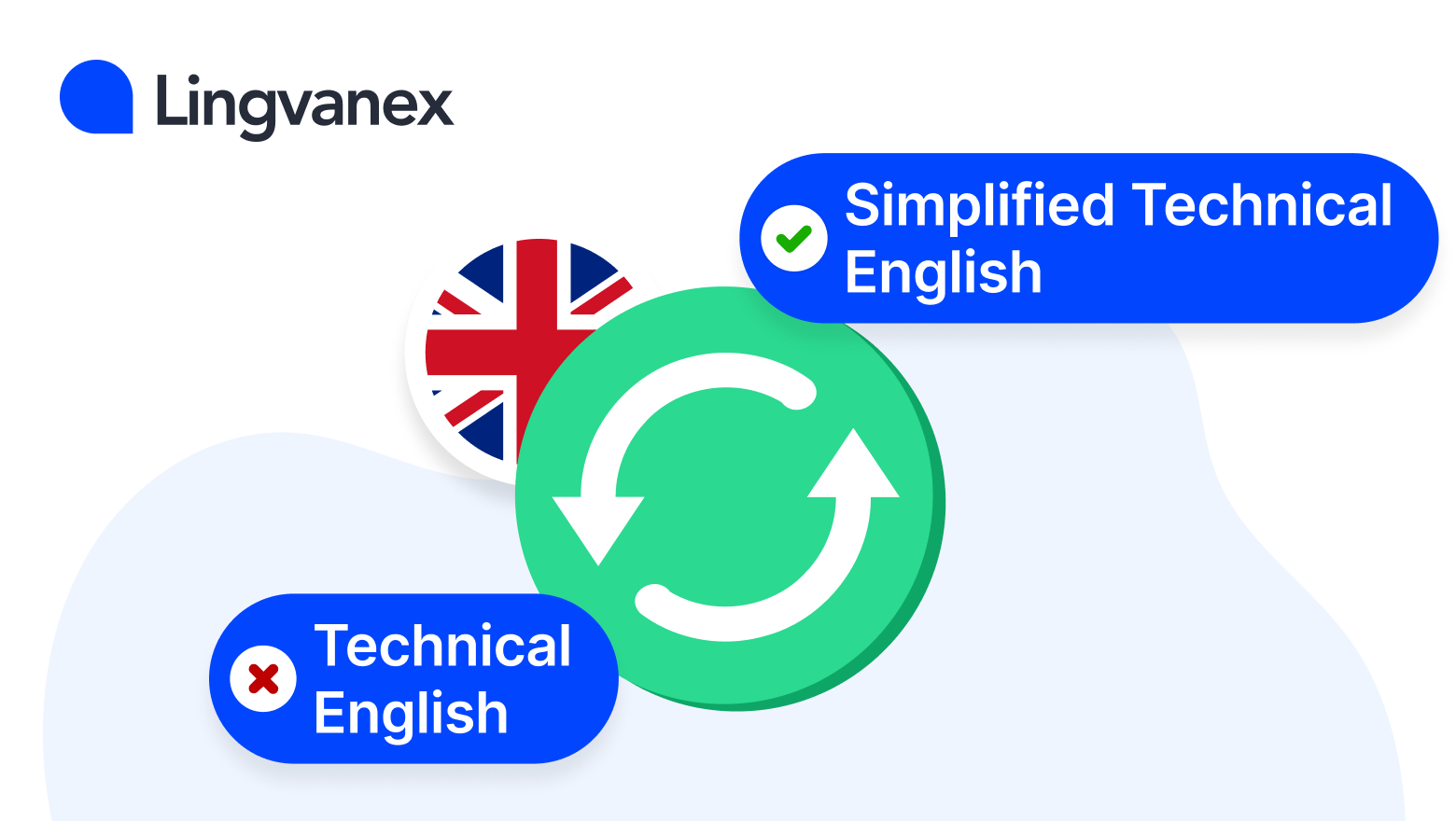Simplified Technical English (STE) is a standardized method of writing technical documentation aimed at using language to perceive reality and meaning. It involves the use of a limited set of words and simple grammatical constructions, which makes instructions and manuals accessible to users with different levels of training.
It all started in the late 1970s, when the problem of hard-to-read user manuals arose in civil aviation. Civil aircraft, being high-tech and complex devices, were accompanied by instructions that were difficult for even experienced engineers to understand. This raised serious concerns, as errors in the interpretation of instructions could lead to disastrous consequences.
In response to this problem, the ASD-STE 100 standard was developed, which was initially used in aviation and later adapted to other industries requiring high-quality technical documentation. In this article, we will delve into the conception of STE, its goals and main rules, and how Lingvanex can help simplify your technical content.

Goals of Simplified Technical English
Lingvanex Simplified Technical Converter is a tool designed to help organizations create clear and effective technical documentation that meets Simplified Technical English (STE) standards. STE's goals are directly related to the broader objectives of effective technical communication. Knowing these goals helps organizations maximize the use of STE in the documentation writing process and ensure a high level of understanding and accuracy.
- Improving Understanding. STE makes information more accessible to people with different levels of knowledge, especially in manuals and instructions.
- Supporting Global Cooperation. STE helps to create a common understanding between teams from different parts of the world. This is especially important for teamwork in projects where people speak different languages.
- Reducing Mistakes and Risks. The clarity and consistency of the language helps to avoid misunderstandings and reduce the risks of errors and security threats.
- Simplifying Translation. The simple language and clearly defined terms make it easier to understand and ensure the accuracy of the translation.
- Encouraging Best Practices in Writing. Following the STE rules helps to improve the quality of technical documents and set professional standards.
Understanding these goals helps to realize the importance of using STE and its widespread use in various industries. In the next section, we will look in detail at the rules on which Simplified Technical English is based.
Simplified Technical English Rules
The core of Simplified Technical English (STE) is built around a set of rules designed to make technical documentation clearer, simpler, and more consistent. These rules focus on both language usage and the structure of sentences, ensuring that technical content is easily understood by people with varying levels of expertise and from different linguistic backgrounds. Here are some of the key rules that form the foundation of STE:
- Use Simple Vocabulary. Limit the use of complex or ambiguous words. Use a controlled vocabulary with clearly defined terms.
- Short Sentences. Keep sentences brief and to the point, focusing on one main idea per sentence.
- Active Voice. Prefer the active voice over the passive voice to make sentences clearer and more direct.
- Standard Grammar. Use simple, correct grammar. Avoid complex structures like nested clauses and excessive punctuation.
- Consistent Terminology. Use terms consistently throughout the document to avoid confusion.
- Clear Instructions. Use clear, direct instructions, especially in user manuals or safety guidelines.
- Avoid Idioms. Refrain from using idiomatic expressions or figurative language that may be misunderstood.
These rules help improve readability, reduce misunderstanding, and make technical documents easier to translate. If your company wants to save time and money while adhering to these standards, we already have a ready solution: Lingvanex Simplified Technical Converter, which works based on these rules to streamline your technical documentation process.
How STE Can Help Different Professionals
Simplified Technical English (STE) is a versatile tool that benefits various professionals who work with technical documentation. It ensures clarity, accuracy, and ease of understanding, regardless of the user's technical background. Here are a few examples of who can benefit from STE:
- Pilots. Simplifies complex aviation manuals and safety procedures, making them easier to understand and follow, especially in high-pressure situations. Clear instructions reduce the risk of errors during critical operations.
- Engineers. Provides engineers with clear, concise technical documentation, ensuring that maintenance and repair procedures are followed correctly. By minimizing ambiguity, it enhances accuracy and reduces the likelihood of costly mistakes.
- Technical Writers. Facilitates the creation of high-quality, standardized documentation by following STE rules. It enables writers to produce clear and consistent content faster, ensuring that the documentation is accessible to a global audience.
- Manufacturing Teams. Makes assembly, repair, and maintenance guides more accessible to workers, regardless of their technical background or language proficiency. This clarity helps reduce errors, increase productivity, and improve safety on the shop floor.
Simplified Technical English Examples
Effective use of STE may be illustrated via a comparative evaluation of well known English and STE constructs, as outlined in the ASD-STE100 specification. Here are a few examples that demonstrate how Simplified Technical English (STE) can be applied to improve clarity in technical documentation:

Should Your Company Have to Use STE?
If you work in a team developing aerospace or defense technology, you are likely already using Simplified Technical English (STE). The same applies to the public sector, where clear and understandable documentation is critical for safety and operational efficiency. But it's not just for specialized industries — everyone can benefit from adopting STE principles.
By following STE rules, companies can improve the clarity of their documents, reduce errors, and ensure that information is easily understood by people with varying levels of technical expertise. Even if your industry is not as technical as aerospace or military, applying these principles can greatly enhance communication and make your documents more effective.
If you're looking for an efficient way to implement these standards without investing a lot of time, Lingvanex Simplified Technical Converter offers a ready-made solution that helps automate the process and ensures consistent, clear documentation.
Conclusion
Simplified Technical English (STE) enhances the clarity and effectiveness of technical communication across industries by bridging the gap between complex processes and end-user understanding. Using clear language, simple vocabulary, and concise instructions improves safety, reduces errors, and boosts communication.
If your company wants to streamline documentation, it is essential to invest in Lingvanex Simplified Technical Converter. This tool provides an efficient solution for implementing STE standards, ensuring that your documentation is clear, consistent, and of the highest quality, while also saving time and reducing errors.
Adopting STE leads to better communication, improved global cooperation, and fewer misunderstandings for both your team and users.



